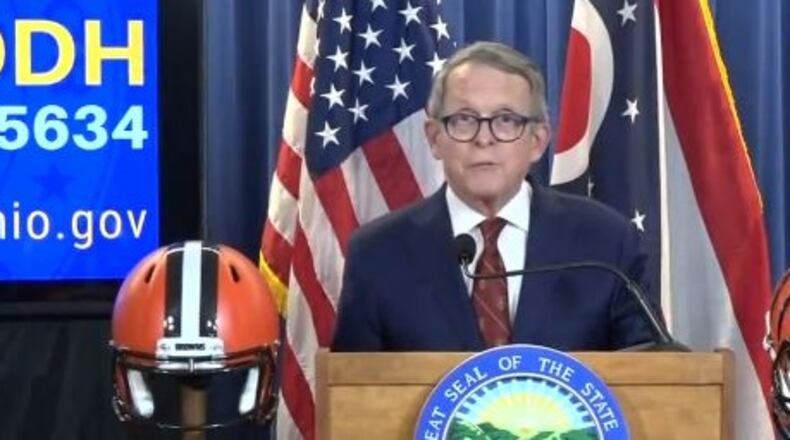His plan will include orders for how businesses will need to protect employees, customers and the public, including some requirements that are not currently mandated for essential businesses operating now.
>> Coronavirus: Complete Coverage
“These are going to be very strict standards to open and I would add that nobody is required to open. We’re saying these are the standards you must meet to open,” Lt. Gov. Jon Husted said.
The pandemic is unfolding as both a health and economic crisis. On Thursday, the state reported another 109,369 initial jobless claims were made for the week ending April 18. That brings total claims made in the past five weeks to 964,566. The state unemployment compensation fund has paid out $926 million to 376,000 claimants over the past five weeks.
The DeWine administration is preparing for a steep drop in sales and income tax revenues that fund state and local governments. State budget cuts will be announced in the next several days.
DeWine said he expects Ohio will have to use the $2.7 billion in the state’s rainy day fund to patch the budget hole over the next 15 months.
The Ohio Department of Health announced 14,142 confirmed cases of COVID-19, plus an additional 552 probable cases; 2,960 hospitalizations; 618 deaths, plus 38 deaths linked to probable cases.
>> $600 unemployment checks going out now; state works to improve system
Dr. Mark Weir of the College of Public Health at Ohio State University joined DeWine and Husted on Thursday to discuss how social distancing and wearing a face mask can prevent the spread of coronavirus.
Though the state has continued to take steps to prevent the spread of the virus, it’s in our environment and the risk of catching it is not at zero, he said.
That’s why even if Ohio reopens carefully, Weir said there will still be more cases reported.
The virus has infected 3,792 prisoners and 331 staff members in three Ohio prisons and cases have been confirmed in another 19 prisons, according to data posted Wednesday. Two-thirds of the state’s 49,000 inmates are in quarantine and visits have been prohibited for weeks.
Pickaway Correctional Institution inmates describe a chaotic scene as they have been sorted into new housing groupings — those who tested negative and those who tested positive. Some men are assigned to tents erected by the Ohio National Guard in the prison yard.
“It’s really just a chaotic situation. Nobody was prepared for this,” said Christopher Roley, who is serving 20-years to life for murder.
Breverly Hunter of Dayton said her stepson, Kurran Washington, who is diabetic, tested positive for the virus and is so sick he can barely talk on the phone. He’s currently incarcerated at the Pickaway prison.
“Right now they need to do something because he is in duress,” she said.
>> Homeless population vulnerable during coronavirus outbreak: ‘I’m just watching people suffer’
Marcus White, 37, who is serving 15-years to life for murder and assault, said DeWine should expand his criteria for commuting sentences during the pandemic so that more nonviolent offenders can be released, making social distancing more realistic inside the prisons. White has been incarcerated since age 18.
“I’m not the same man today,” he said. “I was not sentenced to death. Despite the cruelness of my crime, I’m still a human being.”
RELATED CONTENT:
>> 4.4 million people file new jobless claims
>> Ohio’s unemployment system ‘broken.’ Readers want answers
>> Thousands appear at food distribution: ‘Our pantry and fridge are basically empty’
About the Author


